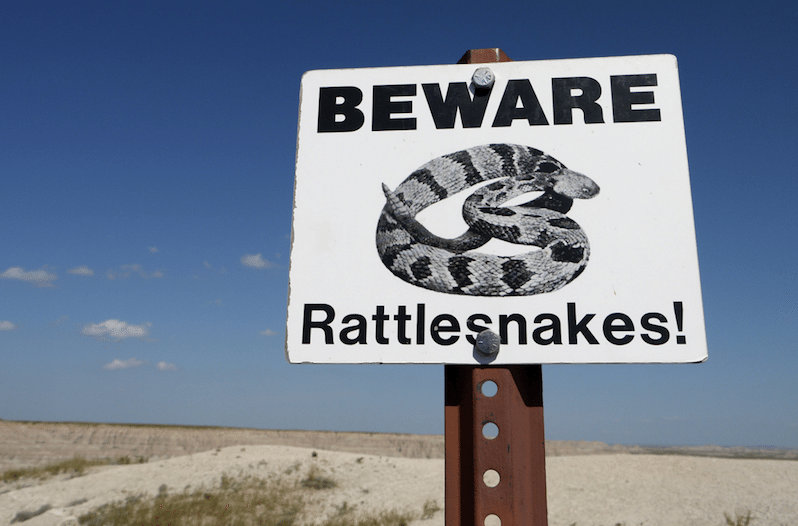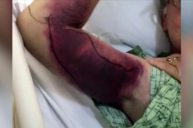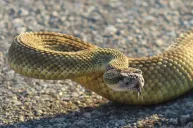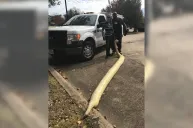The first step to surviving a rattlesnake bite is not to get bitten at all. You should always take preventative measures if you know you'll be stomping around somewhere with a high rattlesnake population. Keep in mind that snakes are usually hiding in underbrush where they can stalk prey, but on cool days, rattlesnakes like to come out. If you're hiking in rattler territory, be aware that they may be coiled up under logs or large rocks on hot days. Also, opt for baggy pants and boots that go above the ankle for extra protection.
Videos by Wide Open Country
Even with the best preventative measures, rattlesnakes can seemingly come out of nowhere across the United States. There also isn't always a way to avoid a bite. Consider the fact that rattlers are able to extend one-third of their body length when striking. The strike takes a fraction of a second. So, even if you try to slowly get away from them, it might not be possible.
Once bitten, it won't take long for the venom to start coursing through your veins. You'll start feeling the effects in minutes. The wound site will become painful, red and swollen, eventually turning blue and traveling up your body. You may also sweat and start to feel dizzy or have nausea. The results can lead to loss of a limb, or worse, loss of life.
That all sounds terrifying, but bites from venomous snakes are rarely fatal when you know what to do. Here are several tips to keep in mind in case you find yourself on the receiving end of an venomous bite.
Call for help
Time is of the essence when you've been bitten. The first thing you should do is call for medical help. Stay calm. Breathe through the pain. It's important that you stay as immobile as possible until help arrives. A snake may strike twice, so get at least 20 feet away from it.
If you're in a remote place or have no phone, you should get to the hospital as quickly as possible. The flesh around the wound starts to die about six hours after infection.
The wound
Keep the wound below your heart. So if your ankle was struck, prop yourself up and keep your leg lying flat. You can clean out the wound with soap and water after letting it bleed for a minute, but don't do anything else to it.
Get rid of restricting clothes
Anything near the bite that could become tight if the wound swells has to go. That means rings, shoes, tight clothing and anything else that could pose a swelling risk.
Got a Sharpie?
Here's a helpful tip you may not have thought of. If you have a Sharpie or marker on hand, write the time that you were bitten near the wound. This will help people treat you better if you've lost consciousness or become disoriented.
Extracting the venom
We do not recommend sucking venom out with your mouth (this isn't Snakes on a Plane). There are controversial reports about whether it's a good idea. However, it's never a bad idea to keep a snake bite kit on you if you're an avid outdoorsman. These should include a suction tool that helps draw out venom.
Things you should NEVER do
According to DesertUSA, here are the things you never want to do:
- NO ice or any other type of cooling on the bite. Research has shown this to be potentially harmful.
- NO tourniquets. This cuts blood flow completely and may result in loss of the affected limb.
- NO electric shock. This method is under study and has yet to be proven effective. It could harm the victim.
- NO incisions in the wound. Such measures have not been proven useful and may cause further injury.
This article was originally published in 2017.




